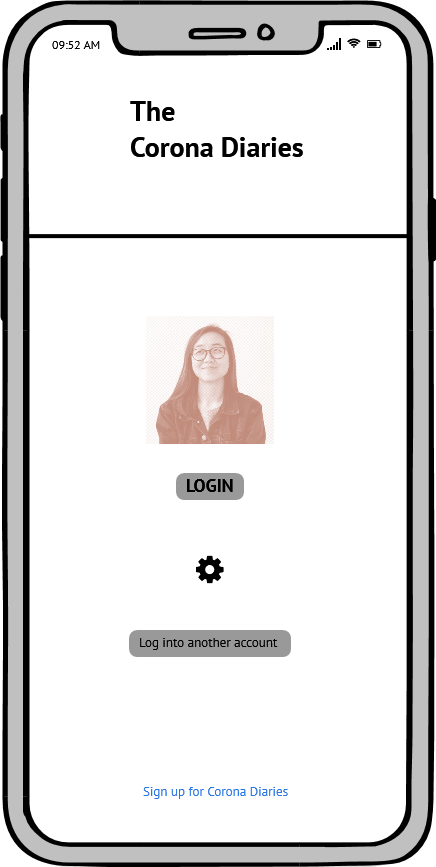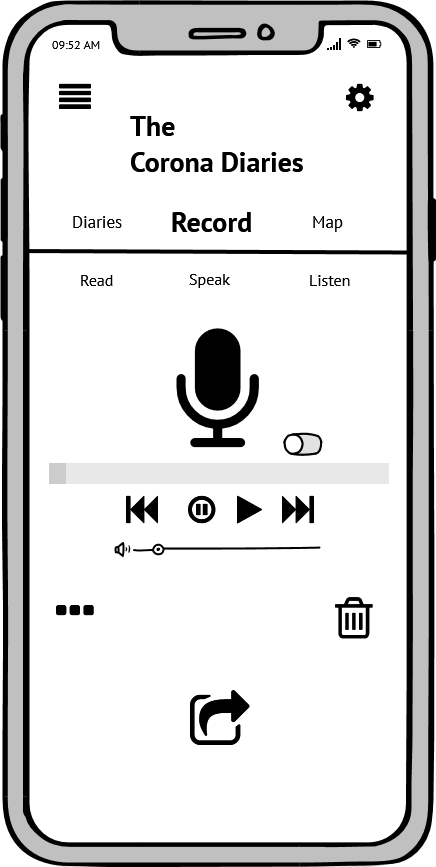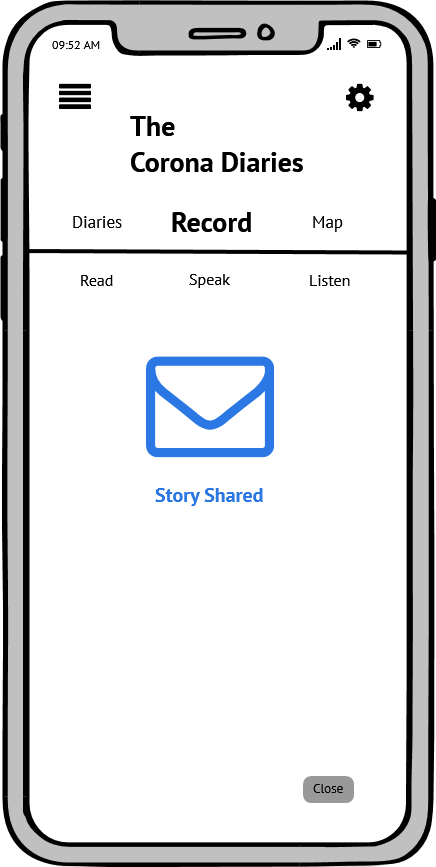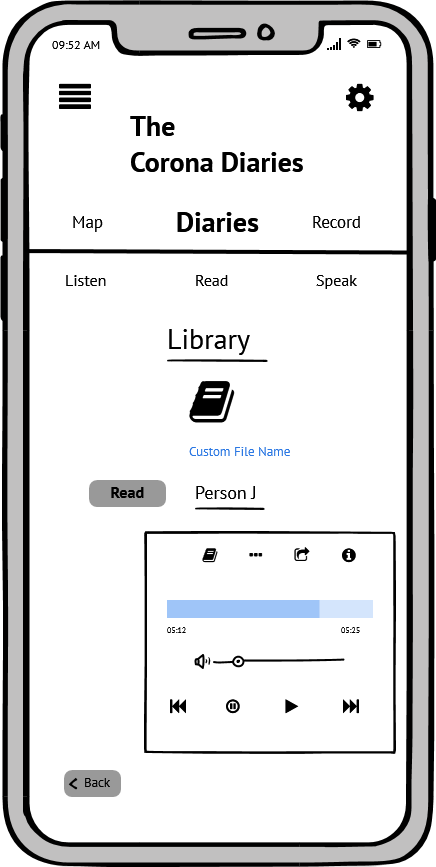Client Link:
Problem:
As this client collects data using open-source audio, it needs to use the collected data. This data is linked to stories related to COVID-19 and can be uploaded by anyone.
My Role:
Lead UX and UI
Time Frame:
2 weeks

Mock Up Example
Case Study:
As someone deeply interested in the potential of open-source audio, I embarked on a project to develop a mobile application prototype that could share real stories from people worldwide. I aimed to create something users could use to access, record, and listen to audio recordings and written text in a personal library called the Corona Diaries.
I began by conducting user research to identify what users wanted and needed from such an application. Using Lean UX methodologies, video interviews, audio transcriptions, persona creation, user flows, and sketching, I deeply understood what my potential users desired.
From my research, I learned that users wanted transparency and the ability to filter information themselves. They also craved real stories from real people and were tired of traditional journalism. Armed with these insights, I designed a prototype to fulfill these needs.
To accomplish this, I used a design tool called Balsamiq to create a clickable prototype. I also used affinity mapping to identify trends in user feedback, which helped me synthesize the information I gathered during the research phase.

The Corona Diaries Wireframe Map
Questions asked:
- What do you know about open-source audio?
- How do you learn about your daily news?
- How would you anonymously share a story about current events?
- When do you listen to podcasts?
- Do you consider yourself a history buff?

Persona Amanda
Research Findings:
Based on my research findings, I created three personas representing my target audience's general needs, goals, challenges, and preferences. These personas helped me identify the core user needs, which included college-educated users with an eye for detail and an interest in trusted sources. They wanted to share human and intellectual content with others and needed help finding real-time information. They also desired transparency, honesty, and communication in real-time.
Using this information, I created a prototype that could fulfill these core user needs. The prototype included recording and sharing open-source audio recordings over the Internet, listening to stories, and accessing content that could be used for academic purposes. The prototype also allowed users to choose the information they wanted to keep in their library, the Corona Diaries.
In the end, designing for users who want the ability to source information from real people who wish to use that information is scholarly. The next steps for this project would include creating a hi-fi prototype, establishing a dialogue with relevant websites, conducting further research, research synthesis, advanced testing, and user trust. But even at this early stage, I believe that open-source audio has the potential to be a viable component for future mobile applications, and I'm excited to see where this project takes me.
The next Steps Figure created in Adobe XD
Quick Video of Prototype:
Quick Video of Prototype






















